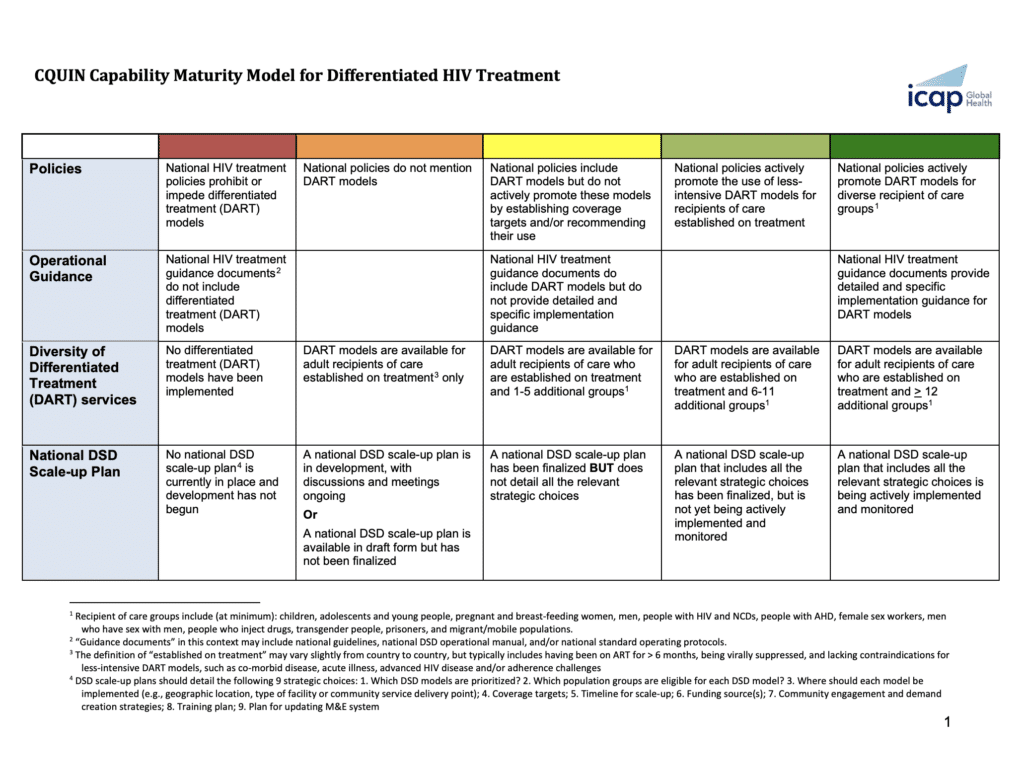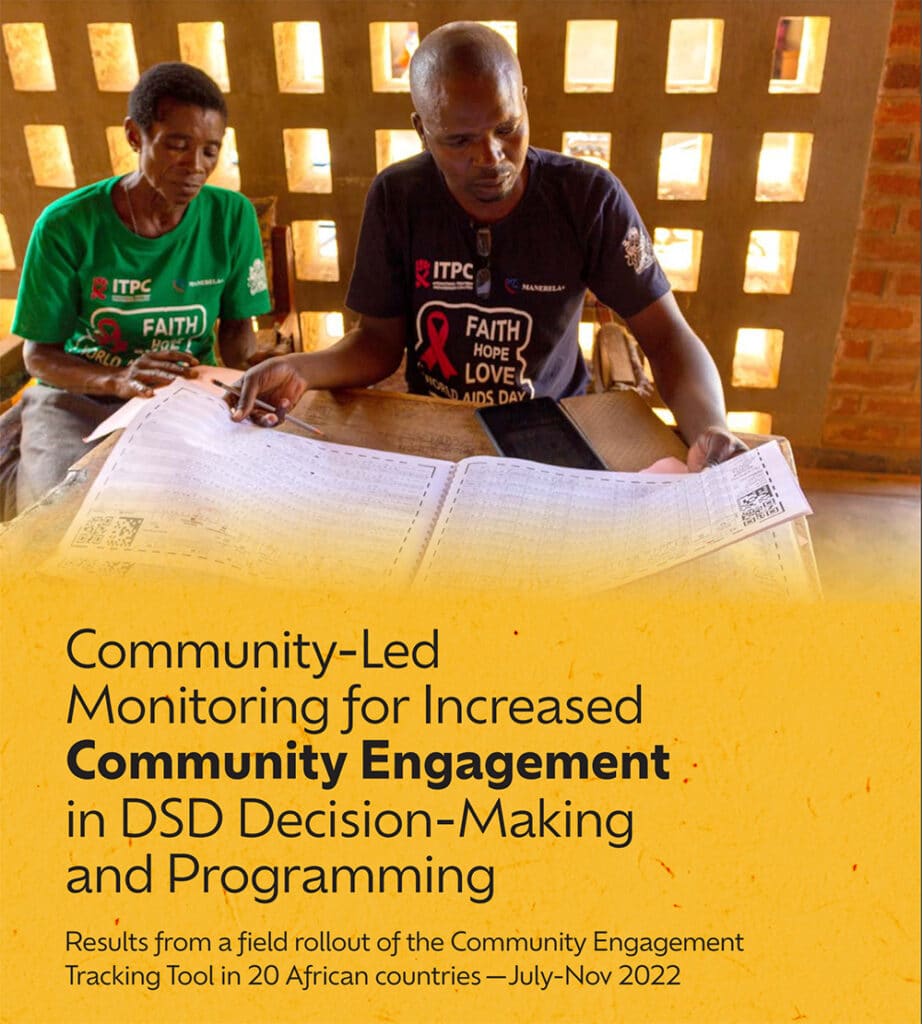This document focuses on differentiated service delivery models for stable adults and adolescents, and includes a variety of clinical, monitoring, and evaluation resources from ICAP country programs and international organizations. It is divided into five main sections focused on:
- Cinical criteria for classifying patients as stable or unstable, and the package of care and delivery of services
- Service delivery models of differentiated care for stable patients, both in the community and health facility
- Considerations for differentiated service delivery for adolescents living with HIV and pregnant and breastfeeding women
- Monitoring and evaluation of differentiated service delivery, including necessary adaptations to existing monitoring systems
- Implementation considerations for scaling up differentiated service delivery models
The guide is part of a four-part series designed to support countries in the implementation of effective strategies that support reaching the global 90-90-90 targets, including increasing targeted HIV testing, improving ART coverage and retention in care, and maximizing services to ensure viral load suppression.





